Helsinki
"Helsingfors" redirects here. For the village in Västerbotten County, Sweden, see Hälsingfors.
For the 2009 Finnish film, see Hellsinki.
| Helsinki Helsinki – Helsingfors | ||
|---|---|---|
| City | ||
| Helsingin kaupunki
Helsingfors stad City of Helsinki |
||

Clockwise from top: Helsinki Cathedral, view of central Helsinki, Headquarters of Sanoma, Helsinki city centre at night, beaches at Aurinkolahti, Parliament House and Suomenlinna.
|
||
|
||
| Nickname(s): Stadi, Hesa[1] | ||
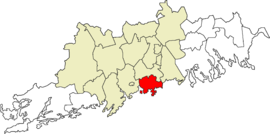 Location in the Uusimaa region and the Helsinki sub-region
Location in the Uusimaa region and the Helsinki sub-region |
||
| Location of Helsinki in Finland | ||
| Coordinates: 60°10′15″N 024°56′15″ECoordinates: 60°10′15″N 024°56′15″E | ||
| Country | Finland | |
| Region | Uusimaa | |
| Sub-region | Helsinki | |
| Charter | 1550 | |
| Capital city | 1812 | |
| Government | ||
| • Mayor | Jussi Pajunen | |
| Area (2011-01-01)[2] | ||
| • City | 715.49 km2 (276.25 sq mi) | |
| • Land | 213.75 km2 (82.53 sq mi) | |
| • Water | 501.74 km2 (193.72 sq mi) | |
| • Urban | 770.26 km2 (297.40 sq mi) | |
| • Metro | 3,697.52 km2 (1,427.62 sq mi) | |
| Area rank | 170th largest in Finland | |
| Population (2015-06-30)[3] | ||
| • City | 626,305 | |
| • Rank | Largest in Finland | |
| • Density | 2,930.08/km2 (7,588.9/sq mi) | |
| • Urban | 1,115,942 | |
| • Urban density | 1,448.8/km2 (3,752/sq mi) | |
| • Metro | 1,431,641 | |
| • Metro density | 387.2/km2 (1,003/sq mi) | |
| Demonym(s) |
helsinkiläinen (Finnish) helsingforsare (Swedish) Helsinkian (English) |
|
| Population by native language[4] | ||
| • Finnish | 84.3% (official) | |
| • Swedish | 6.1% (official) | |
| • Others | 9.6% | |
| Population by age[5] | ||
| • 0 to 14 | 13.7% | |
| • 15 to 64 | 72% | |
| • 65 or older | 14.3% | |
| Time zone | EET (UTC+2) | |
| • Summer (DST) | EEST (UTC+3) | |
| Municipal tax rate[6] | 18.5% | |
| Website | www.hel.fi | |
The Helsinki metropolitan area includes the urban core of Helsinki, Espoo, Vantaa, Kauniainen, and surrounding commuter towns.[8] It is the world's northernmost metro area of over one million people, and the city is the northernmost capital of an EU member state. The Helsinki metropolitan area is the fourth largest Nordic metropolitan area after the metropolitan areas of Copenhagen, Stockholm, and Oslo, and the City of Helsinki is the third biggest Nordic city after Stockholm and Oslo.
Helsinki is Finland's major political, educational, financial, cultural, and research center as well as one of northern Europe's major cities. Approximately 70% of foreign companies operating in Finland have settled in the Helsinki region.[9] The nearby municipality of Vantaa is the location of Helsinki Airport, with frequent service to various destinations in Europe and Asia.
In 2009, Helsinki was chosen to be the World Design Capital for 2012[10] by the International Council of Societies of Industrial Design, narrowly beating Eindhoven for the title. The city was the venue for the XV Olympic Games 1952 and the 52nd Eurovision Song Contest 2007.
In 2011, the Monocle magazine ranked Helsinki the most liveable city in the world in its "Liveable Cities Index 2011".[11] In the Economist Intelligence Unit's August 2015 Liveability survey, assessing the best and worst cities to live in globally, Helsinki placed among the world's top ten cities.[12]
Contents
Etymology
Helsinki is used to refer to the city in most languages, but not in Swedish.The Swedish name Helsingfors is the original official name of the City of Helsinki (in the very beginning, spelled Hellssingeforss). The Finnish language form of the name likely originates from Helsinga and similar names used for the river that is currently known as the Vantaa River, as documented already in the 14th century. Helsingfors comes from the name of the surrounding parish, Helsinge (source for Finnish Helsinki) and the rapids (Swedish: fors), which flowed through the original village, which is now located in Vantaa. As part of the Grand Duchy of Finland in the Russian Empire, Helsinki was known as Gelsingfors – a Russian adaption of the Swedish name.
One suggestion for the origin of the name Helsinge is that it originated with medieval Swedish settlers who came from Hälsingland in Sweden. Others have proposed that the name derives from the Swedish word helsing, a former version of the word hals (neck), referring to the narrowest part of the river, i.e. the rapids.[13] Other Scandinavian cities located at similar geographic locations were given similar names at the time, such as Helsingør and Helsingborg.
The name Helsinki has been used in Finnish official documents and in Finnish language newspapers since 1819, when the Senate of Finland moved to the town. The decrees issued there were dated with Helsinki as the place of issue. This is how the form Helsinki came to be used in the Finnish literary language.[14]
In Helsinki slang the city is nicknamed as either Stadi (from the Swedish word stad, meaning "city") or Hesa (short of Helsinki), with Stadi being used to assert that the speaker is native to the city.[1][15] Helsset is the Northern Sami name of Helsinki.[16]
History
Main articles: History of Helsinki and Timeline of Helsinki
Central Helsinki in 1820 before rebuilding. Illustration by Carl Ludvig Engel.
Construction of Suomenlinna began in the 18th century.
Early history
Helsinki was established as a trading town by King Gustav I of Sweden in 1550 as the town of Helsingfors, which he intended to be a rival to the Hanseatic city of Reval (today known as Tallinn). Little came of the plans as Helsinki remained a tiny town plagued by poverty, wars, and diseases. The plague of 1710 killed the greater part of the inhabitants of Helsinki.[17] The construction of the naval fortress Sveaborg (In Finnish Viapori, today also Suomenlinna) in the 18th century helped improve Helsinki's status, but it was not until Russia defeated Sweden in the Finnish War and annexed Finland as the autonomous Grand Duchy of Finland in 1809 that the town began to develop into a substantial city. During the war, Russians besieged the Sveaborg fortress, and about one quarter of the town was destroyed in an 1808 fire.[18]Czar Alexander I of Russia moved the Finnish capital from Turku to Helsinki in 1812 to reduce Swedish influence in Finland, and to bring the capital closer to St. Petersburg. Following the Great Fire of Turku in 1827, The Royal Academy of Turku, at the time the country's only university, was also relocated to Helsinki, and eventually became the modern University of Helsinki. The move consolidated the city's new role and helped set it on a path of continuous growth. This transformation is highly apparent in the downtown core, which was rebuilt in neoclassical style to resemble St. Petersburg, mostly to a plan by the German-born architect C. L. Engel. As elsewhere, technological advancements such as railroads and industrialization were key factors behind the city's growth.
Twentieth century
Despite the tumultuous nature of Finnish history during the first half of the 20th century, Helsinki continued its steady development. A landmark event was the XV Olympic games (1952 Olympic Games), held in Helsinki. Finland's rapid urbanization in the 1970s, occurring late relative to the rest of Europe, tripled the population in the metropolitan area, and the Helsinki Metro subway system was built. The relatively sparse population density of Helsinki and its peculiar structure have often been attributed to the lateness of its growth.[citation needed]Geography
Parts of Helsinki and Espoo seen from SPOT
Main article: Geography of Helsinki
Called the "Daughter of the Baltic", Helsinki is located on the tip
of a peninsula and on 315 islands. The inner city area occupies a
southern peninsula, which is rarely referred to by its actual name Vironniemi.
Population density in certain parts of Helsinki's inner city area is
very high, reaching 16,494 inhabitants per square kilometre
(42,720/sq mi) in the district of Kallio,
but as a whole Helsinki's population density of 3,050 per square
kilometre (7,900/sq mi) ranks the city as quite sparsely populated in
comparison to other European capital cities.[19][20]
Much of Helsinki outside the inner city area consists of postwar
suburbs separated from each other by patches of forest. A narrow, 10
kilometres (6.2 mi) long Helsinki Central Park,
stretching from the inner city to the northern border of Helsinki, is
an important recreational area for residents. The City of Helsinki has
about 11,000 boat berths
and possesses over 14 000 hectares of marine fishing waters adjacent to
the Capital Region. Some 60 fish species are found in this area.
Recreational fishing is a popular hobby among kids and adults alike.Major islands in Helsinki include Seurasaari, Vallisaari, Lauttasaari, and Korkeasaari – the lattermost being the site of the country's biggest zoo. Other noteworthy islands are the fortress island of Suomenlinna (Sveaborg), the military island of Santahamina, and Isosaari. Pihlajasaari island is a favorite summer spot for gay men and naturists, comparable to Fire Island off New York City.
Metropolitan area
Main article: Greater Helsinki
The Greater Helsinki urban area
The Helsinki Metropolitan Area (Greater Helsinki) consists of the cities of Helsinki Capital Region and ten surrounding municipalities. The Metropolitan Area covers 3,697 square kilometres (1,427 sq mi) and contains a total population of over 1.4 million, or about a fourth of the total population of Finland. The Metropolitan Area has a high concentration of employment: approximately 750,000 jobs.[23] Despite the intensity of land use, the region also has large recreational areas and green spaces. The Greater Helsinki area is the world's northernmost urban area with a population of over one million people, and the city is the northernmost capital of an EU member state.
Climate
Helsinki in summer
Winters in Helsinki are notably warmer than in the north, and the snow season is much shorter. Temperatures below −20 °C (−4 °F) occur a few times a year or less. However, because of the latitude, days last 5 hours and 48 minutes around the winter solstice with very low Sun (at noon Sun is little bit over 6 degrees in the sky), and the cloudy weather at this time of year accentuates the darkness. Conversely, Helsinki enjoys long daylight in summer, during the summer solstice days last 18 hours and 57 minutes .[25]
The average maximum temperature from June to August is around 19 to 22 °C (66 to 72 °F). Due to the marine effect, especially during hot summer days, daily temperatures are a little cooler and night temperatures are higher than further away in the mainland. The highest temperature ever recorded in the city centre was 33.1 °C (91.6 °F), on 18 July 1945, and the lowest was −34.3 °C (−30 °F), on 10 January 1987.[26] Helsinki Airport (located in Vantaa, 17 kilometres (11 mi) north of the Helsinki city centre) recorded a temperature of 34.0 °C (93.2 °F), on 29 July 2010, and a low of −35.9 °C (−33 °F), on 9 January 1987. Precipitation is received from frontal passages and thunderstorms. Thunderstorms are most common in summer.
| [hide]Climate data for Central Helsinki (Kaisaniemi) | |||||||||||||
|---|---|---|---|---|---|---|---|---|---|---|---|---|---|
| Month | Jan | Feb | Mar | Apr | May | Jun | Jul | Aug | Sep | Oct | Nov | Dec | Year |
| Record high °C (°F) | 8.5 (47.3) |
11.8 (53.2) |
17.1 (62.8) |
21.9 (71.4) |
29.6 (85.3) |
32.0 (89.6) |
33.1 (91.6) |
31.2 (88.2) |
26.2 (79.2) |
19.4 (66.9) |
13.8 (56.8) |
10.0 (50) |
33.1 (91.6) |
| Average high °C (°F) | −1.3 (29.7) |
−1.9 (28.6) |
1.6 (34.9) |
7.6 (45.7) |
14.4 (57.9) |
18.5 (65.3) |
21.5 (70.7) |
19.8 (67.6) |
14.6 (58.3) |
9.0 (48.2) |
3.7 (38.7) |
0.5 (32.9) |
9.0 (48.2) |
| Daily mean °C (°F) | −3.9 (25) |
−4.7 (23.5) |
−1.3 (29.7) |
3.9 (39) |
10.2 (50.4) |
14.6 (58.3) |
17.8 (64) |
16.3 (61.3) |
11.5 (52.7) |
6.6 (43.9) |
1.6 (34.9) |
−2.0 (28.4) |
5.9 (42.6) |
| Average low °C (°F) | −6.5 (20.3) |
−7.4 (18.7) |
−4.1 (24.6) |
0.8 (33.4) |
6.3 (43.3) |
10.9 (51.6) |
14.2 (57.6) |
13.1 (55.6) |
8.7 (47.7) |
4.3 (39.7) |
−0.6 (30.9) |
−4.5 (23.9) |
2.9 (37.2) |
| Record low °C (°F) | −34.3 (−29.7) |
−31.5 (−24.7) |
−24.5 (−12.1) |
−16.3 (2.7) |
−4.8 (23.4) |
0.7 (33.3) |
5.4 (41.7) |
2.8 (37) |
−4.5 (23.9) |
−11.6 (11.1) |
−18.6 (−1.5) |
−29.5 (−21.1) |
−34.3 (−29.7) |
| Average precipitation mm (inches) | 52 (2.05) |
36 (1.42) |
38 (1.5) |
32 (1.26) |
37 (1.46) |
57 (2.24) |
63 (2.48) |
80 (3.15) |
56 (2.2) |
76 (2.99) |
70 (2.76) |
58 (2.28) |
655 (25.79) |
| Average snowfall cm (inches) | 21 (8.3) |
23 (9.1) |
14 (5.5) |
0 (0) |
0 (0) |
0 (0) |
0 (0) |
0 (0) |
0 (0) |
0 (0) |
4 (1.6) |
12 (4.7) |
74 (29.2) |
| Average rainy days | 19 | 17 | 15 | 11 | 11 | 14 | 12 | 15 | 14 | 16 | 18 | 20 | 182 |
| Mean monthly sunshine hours | 38 | 70 | 138 | 194 | 284 | 297 | 291 | 238 | 150 | 93 | 36 | 29 | 1,858 |
| Source: Climatological statistics for the normal period 1981–2010 (except the Records rows, which are 'all-time' records [data source required]) [26] | |||||||||||||
| [hide]Climate data for Helsinki Airport (Vantaa) | |||||||||||||
|---|---|---|---|---|---|---|---|---|---|---|---|---|---|
| Month | Jan | Feb | Mar | Apr | May | Jun | Jul | Aug | Sep | Oct | Nov | Dec | Year |
| Record high °C (°F) | 8.2 (46.8) |
10.0 (50) |
17.5 (63.5) |
24.0 (75.2) |
29.0 (84.2) |
31.4 (88.5) |
34.0 (93.2) |
31.5 (88.7) |
25.3 (77.5) |
18.2 (64.8) |
11.3 (52.3) |
9.6 (49.3) |
34 (93.2) |
| Average high °C (°F) | −2.4 (27.7) |
−2.7 (27.1) |
1.5 (34.7) |
8.7 (47.7) |
15.8 (60.4) |
19.6 (67.3) |
22.5 (72.5) |
20.5 (68.9) |
14.8 (58.6) |
8.6 (47.5) |
2.6 (36.7) |
−0.7 (30.7) |
9.1 (48.4) |
| Daily mean °C (°F) | −5.0 (23) |
−5.7 (21.7) |
−1.9 (28.6) |
4.1 (39.4) |
10.4 (50.7) |
14.6 (58.3) |
17.7 (63.9) |
15.8 (60.4) |
10.7 (51.3) |
5.6 (42.1) |
0.4 (32.7) |
−3.2 (26.2) |
5.3 (41.5) |
| Average low °C (°F) | −8.1 (17.4) |
−8.9 (16) |
−5.4 (22.3) |
−0.2 (31.6) |
4.8 (40.6) |
9.5 (49.1) |
12.6 (54.7) |
11.3 (52.3) |
6.9 (44.4) |
2.7 (36.9) |
−2.1 (28.2) |
−6.0 (21.2) |
1.4 (34.5) |
| Record low °C (°F) | −35.9 (−32.6) |
−30.2 (−22.4) |
−27.2 (−17) |
−12.1 (10.2) |
−5.4 (22.3) |
−0.5 (31.1) |
4.0 (39.2) |
2.0 (35.6) |
−7.3 (18.9) |
−14.5 (5.9) |
−19.9 (−3.8) |
−29.5 (−21.1) |
−35.9 (−32.6) |
| Average precipitation mm (inches) | 54 (2.13) |
37 (1.46) |
37 (1.46) |
32 (1.26) |
39 (1.54) |
61 (2.4) |
66 (2.6) |
79 (3.11) |
64 (2.52) |
82 (3.23) |
73 (2.87) |
58 (2.28) |
682 (26.86) |
| Average rainy days | 23 | 20 | 17 | 12 | 12 | 14 | 13 | 15 | 16 | 18 | 21 | 24 | 205 |
| Mean monthly sunshine hours | 38 | 74 | 131 | 196 | 275 | 266 | 291 | 219 | 143 | 84 | 37 | 26 | 1,780 |
| Percent possible sunshine | 21 | 34 | 41 | 49 | 55 | 49 | 52 | 44 | 35 | 25 | 16 | 14 | 36.3 |
| Source: Climatological statistics for the normal period 1981–2010 (except the Records rows, which are 'all-time' records [data source required]) [26] Sun and record temperatures 1981-2011 only | |||||||||||||
Cityscape
Aleksanterinkatu in Central Helsinki
The view across summertime Eläintarhanlahti
The Helsinki Cathedral is among the most prominent buildings in the city.
The Parliament of Finland on the right, and new supplemental offices on the left
Helsinki also features several buildings by the world-renowned Finnish architect Alvar Aalto (1898–1976), recognized as one of the pioneers of architectural functionalism. However, some of his works, such as the headquarters of the paper company Stora Enso and the concert venue Finlandia Hall, have been subject to divided opinions from the citizens.[27][28][29]
Renowned functionalist buildings in Helsinki by other architects include the Olympic Stadium, the Tennis Palace, the Rowing Stadium, the Swimming Stadium, the Velodrome, the Glass Palace, the Exhibition Hall (now Töölö Sports Hall), and Helsinki-Malmi Airport. The sports venues were built to serve the 1940 Helsinki Olympic Games; the games were initially cancelled due to the Second World War, but the venues eventually got to fulfill their purpose in the 1952 Olympic Games. Many of them are listed by DoCoMoMo as significant examples of modern architecture. The Olympic Stadium and Helsinki-Malmi Airport are in addition catalogued by the Finnish National Board of Antiquities as cultural-historical environments of national significance.[citation needed]
As a historical footnote, Helsinki's neoclassical buildings were often used as a backdrop for scenes set to take place in the Soviet Union in many Cold War era Hollywood movies, when filming in the USSR was not possible. Some of the more notable ones are The Kremlin Letter (1970), Reds (1981), and Gorky Park (1983). Because some streetscapes were reminiscent of Leningrad's and Moscow's old buildings, they too were used in movie productions—much to some residents' dismay. At the same time the government secretly instructed Finnish officials not to extend assistance to such film projects.[30]
In the 21st century Helsinki has decided to allow the construction of skyscrapers. Several projects are already in progress, mainly in Pasila and Kalasatama. The tallest (with 40 floors) will rise to at least 150 metres (500 feet). In Pasila, twenty new high-rises will be erected within 10 years.[31] In Kalasataman Keskus REDI, the first 35-story (130 metres) and 32-story (122 metres) residential towers are already under construction. Later they will be joined by a 37-story (140 metres), two 32-story (122 metres, 400 feet), 31-story (120 metres), and 27-story (100 metres) residential buildings. In the Kalasatama area, there will be 30 high-rises within 10 years.[32]
A panoramic view over the southernmost districts of Helsinki from Hotel Torni. The Helsinki Old Church and its surrounding park are seen in the foreground, while the towers of St. John's Church (near center) and Mikael Agricola Church (right) can be seen in the middle distance, backdropped by the Gulf of Finland.
A panoramic view of Rautatientori ("Railway Square"). Art museum Ateneum can be seen on the left, the Helsinki Central Railway Station is centered, and the Finnish National Theatre is to the right.
A panoramic view of Kamppi Center and its surroundings
Government
Main article: Politics of Helsinki
The Helsinki City Hall houses the City Council of Helsinki
The City Council of Helsinki consists of eighty-five members. Following the most recent municipal elections, in 2012, the three largest parties are the National Coalition Party (23), the Greens (19), and the Social Democrats (15).[33] The Mayor, Jussi Pajunen, is a member of the National Coalition Party.
Traditionally, the conservative National Coalition Party (Kokoomus) has been the biggest party on Helsinki City Council, with the Social Democrats being the second biggest. In 2000 the Greens, for which Helsinki is the strongest area of support nationally, gained the position of second most popular party in the city, in 2004 the Social Democrats regained that position, and since 2008 the Greens have again been the second biggest party.
The Left Alliance is the fourth largest party, while the True Finns have increased their support steadily to become the fifth largest party. Support for the Swedish People's Party has been steadily declining over the years, most likely because of the diminishing proportion of Swedish speakers in Helsinki. The Centre Party of Finland, despite being one of the major parties in national politics, has little support in Helsinki, as it does in most big cities.
Demographics
Children jumping into the sea in Lauttasaari
Helsinki has experienced strong growth since the 1810s, when it replaced Turku as the capital of the Grand Duchy of Finland, which later became the sovereign Republic of Finland. The city continued to show strong growth from that time onward, with the exception during the Finnish Civil War period. From the end of World War II up until the 1970s there was a massive exodus of people from the countryside to the cities of Finland, in particular Helsinki. Between 1944 and 1969 the population of the city nearly doubled from 275,000[36] to 525,600.[37]
In the 1960s, the population growth of Helsinki proper began to ebb mainly due to lack of housing.[38] Many residents began to move to neighbouring Espoo and Vantaa, where population growth has since soared. Espoo's population increased ninefold in sixty years, from 22,874 people in 1950 to 244,353 in 2009.[citation needed] Neighboring Vantaa has seen even more dramatic change in the same time span: from 14,976 in 1950 to 197,663 in 2009, a thirteenfold increase. These dramatic increases pushed the municipalities of greater Helsinki into more intense cooperation in such areas as public transportation[39] and waste management.[40] The increasing scarcity of housing and the higher costs of living in the Helsinki Capital Region have pushed many daily commuters to find housing in formerly very rural areas, and even further, to such cities as Lohja (50 km (31 mi) northwest from the city centre), Hämeenlinna and Lahti (both 100 km (62 mi) from Helsinki), and Porvoo (50 km (31 mi) to the east).
Language
| Population by mother tongue[41] | ||
| Language | Population (2013) | Percentage |
|---|---|---|
| Finnish | 494,627 | 81,9% |
| Swedish | 35,674 | 5,9% |
| Russian | 15,341 | 2,5% |
| Estonian | 10,207 | 1,7% |
| Somali | 7,193 | 1,2% |
| English | 4,879 | 0,8% |
| Arabic | 3,446 | 0,6% |
| Chinese | 2,691 | 0,4% |
| Kurdish | 2,264 | 0,4% |
| Spanish | 2,073 | 0,3% |
| German | 1,665 | 0,3% |
| French | 1,462 | 0,2% |
| Persian | 1,457 | 0,2% |
| Vietnamese | 1,416 | 0,2% |
| Turkish | 1,408 | 0,2% |
| Thai | 1,123 | 0,2% |
| Albanian | 1,005 | 0,2% |
| Other | 15,978 | 2,6% |
The population broken down by language group, 1870-2013. During the
period, the population increased significantly, and the city changed its
linguistic majority from Swedish to Finnish.
Finnish speakers
Swedish speakers
Russian speaker
Speakers of other languages
Finnish speakers
Swedish speakers
Russian speaker
Speakers of other languages
Finnish speakers surpassed Swedish speakers in 1890 to become the majority of the city's population.[44] At the time, the population of Helsinki was 61,530.[45]
Immigration
Helsinki is the global gateway of Finland. The city has Finland's largest immigrant population in both absolute and relative terms. There are over 140 nationalities represented in Helsinki. The largest groups (as of 2013) are from Sweden, Russia, Estonia, Somalia, China, Kurdistan, Spain, Germany, France, Vietnam, and Turkey. Helsinki was already an international city in the late 19th century with distinctive Swedish, Russian, and German minorities.Foreign citizens make up 8.0% of the population, while foreign born make up 11.1%.[46] In 2012, 68,375[46] residents spoke a native language other than Finnish, Swedish, or one of the three Sami languages spoken in Finland. The largest groups of residents with a non-Finnish background come from Russia (14,532), Estonia (9,065), and Somalia (6,845).[46] Half of the immigrant population in Finland lives in Greater Helsinki, and one third in the City of Helsinki.[47]
Economy
Kamppi Center, a shopping and transportation complex in Kamppi
The metropolitan area's gross value added per capita is 200% of the mean of 27 European metropolitan areas, equalling those of Stockholm or Paris. The gross value added annual growth has been around 4%.[49]
83 of the 100 largest Finnish companies are headquartered in Greater Helsinki. Two-thirds of the 200 highest-paid Finnish executives live in Greater Helsinki and 42% in Helsinki. The average income of the top 50 earners was 1.65 million euro.[50]
The tap water is of excellent quality and it is supplied by 120 km (75 mi) long Päijänne Water Tunnel, one of the world's longest continuous rock tunnels. Bottled Helsinki tap water is even sold to other countries, such as Saudi Arabia.[51]
Education
University of Helsinki's Main Library: Kaisa-talo
Main building of the University of Helsinki
Haaga-Helia University Of Applied Sciences is the largest business polytechnic in Finland
Universities
See also: List of universities in Finland
- University of Helsinki
- Aalto University
- Hanken School of Economics
- University of the Arts Helsinki
- National Defence University
University of Applied Sciences
- Haaga-Helia University Of Applied Sciences
- Laurea University of Applied Sciences
- Helsinki Metropolia University of Applied Sciences
- Arcada University of Applied Sciences
The educational department takes part in Lifelong Learning Programme 2007–2013 in Finland.
Culture
Museums
The biggest historical museum in Helsinki is the National Museum of Finland, which displays a vast historical collection from prehistoric times to the 21st century. The museum building itself, a national romantic style neomedieval castle, is a tourist attraction. Another major historical museum is the Helsinki City Museum, which introduces visitors to Helsinki's 500-year history. The University of Helsinki also has many significant museums, including the Helsinki University Museum "Arppeanum" and the Finnish Museum of Natural History.The Finnish National Gallery consists of three museums: Ateneum Art Museum for classical Finnish art, Sinebrychoff Art Museum for classical European art, and Kiasma Art Museum for modern art, in a building by architect Steven Holl. The old Ateneum, a neo-Renaissance palace from the 19th century, is one of the city's major historical buildings. All three museum buildings are state-owned through Senate Properties.
The Design Museum is devoted to the exhibition of both Finnish and foreign design, including industrial design, fashion, and graphic design. Other museums in Helsinki include the Military Museum of Finland, Didrichsen Art Museum, Amos Anderson Art Museum, and the Tram Museum.
- Museums in Helsinki
-
Classical art museum Ateneum (1887)
-
Kiasma museum of contemporary art (1998)
-
Sinebrychoff Art Museum (1842)
-
The Design Museum (1894)
-
The National Museum of Finland (1910)
-
The Military Museum of Finland (1881)
-
Kunsthalle Helsinki art venue (1928)
-
The Finnish Museum of Natural History (1913)
-
Didrichsen Art Museum (1964)
-
Amos Anderson Art Museum (1913)
-
Helsinki University Museum "Arppeanum" (1869)
Theatres
The Finnish National Theatre (1902), designed by architect Onni Tarjanne
Music
Helsinki is home to two full-size symphony orchestras, the Helsinki Philharmonic Orchestra and the Finnish Radio Symphony Orchestra, both of which perform at the Helsinki Music Centre concert hall. Acclaimed contemporary composers Kaija Saariaho, Magnus Lindberg, Esa-Pekka Salonen, and Einojuhani Rautavaara, among others, were born and raised in Helsinki, and studied at the Sibelius Academy. The Finnish National Opera, the only full-time, professional opera company in Finland, is located in Helsinki. The opera singer Martti Wallén, one of the company's long-time soloists, was born and raised in Helsinki, as was mezzo-soprano Monica Groop.Many widely renowned and acclaimed bands have originated in Helsinki, including Hanoi Rocks, HIM, Stratovarius, The 69 Eyes, Finntroll, Ensiferum, Wintersun, The Rasmus, Poets of the Fall, and Apocalyptica.
The city's main musical venues are the Finnish National Opera, the Finlandia concert hall, and the Helsinki Music Centre. The Music Centre also houses a part of the Sibelius Academy. Bigger concerts and events are usually held at one of the city's two big ice hockey arenas: the Hartwall Areena or the Helsinki Ice Hall. Helsinki has Finland's largest fairgrounds.
Helsinki Arena hosted the Eurovision Song Contest 2007, the first Eurovision Song Contest arranged in Finland, following Lordi's win in 2006.
Art
Strange Fruit performing at the Night of the Arts in Helsinki
Vappu is an annual carnival for students and workers.
At the Senate Square in September / October 2010, the largest open-air art exhibition ever in Finland took place: About 1.4 million people saw the international exhibition of United Buddy Bears.
Helsinki is the 2012 World Design Capital, in recognition of the use of design as an effective tool for social, cultural, and economic development in the city. In choosing Helsinki, the World Design Capital selection jury highlighted Helsinki's use of 'Embedded Design', which has tied design in the city to innovation, "creating global brands, such as Nokia, Kone, and Marimekko, popular events, like the annual Helsinki Design Week, outstanding education and research institutions, such as the University of Art and Design Helsinki, and exemplary architects and designers such as Eliel Saarinen and Alvar Aalto".[10]
Helsinki also hosts many film festivals. Most of them are small venues, but some have gained renown even abroad. The most prolific would be the Love & Anarchy film festival (also known as Helsinki International Film Festival), which features films on a wide spectrum. Night Visions Film Festival on the other hand focuses on genre cinema, screening horror, fantasy, and science fiction films in very popular movie marathons that take whole night. Another popular film festival is DocPoint, a festival that focuses solely on documentary cinema.[53][54][55]
Media
Linus Torvalds, the Finnish software engineer best known for creating the popular open-source kernel Linux
Each year, around 12,000 book titles are published and 12 million records are sold across Finland.[56]
Sanoma publishes the newspaper Helsingin Sanomat (its circulation of 412,000[57] making it the largest), the tabloid Ilta-Sanomat, the commerce-oriented Taloussanomat, and the television channel Nelonen. The other major publisher Alma Media publishes over thirty magazines, including the newspaper Aamulehti, tabloid Iltalehti, and commerce-oriented Kauppalehti. Worldwide, Finns, along with other Nordic peoples and the Japanese, spend the most time reading newspapers.[58]
Yle, the Finnish Broadcasting Company, operates five television channels and thirteen radio channels in both national languages. Headquartered in the neighbourhood of Pasila, Yle is funded through a mandatory television license and fees for private broadcasters. All TV channels are broadcast digitally, both terrestrially and on cable. The commercial television channel MTV3 and commercial radio channel Radio Nova are owned by Nordic Broadcasting (Bonnier and Proventus Industrier).
As of 2007, around 79% of the Finnish population uses the Internet.[59] Finland had around 1.52 million broadband Internet connections by the end of June 2007 or around 287 per 1,000 inhabitants.[60] All Finnish schools and public libraries have Internet connections and computers, and most residents have a mobile phone. Value-added services are rare.[61] In October 2009, Finland's Ministry of Transport and Communications committed to ensuring that every person in Finland would be able to access the Internet at a minimum speed of one megabit-per-second beginning July 2010.[62]
Sports
Main article: Sport in Helsinki
The Helsinki Olympic Stadium was the centre of activities during the 1952 Summer Olympics.
Helsinki was elected host-city of the 1940 Summer Olympics, but due to World War II they were canceled. Instead Helsinki was the host of the 1952 Summer Olympics. The Olympics were a landmark event symbolically and economically for Helsinki and Finland as a whole that was recovering from the winter war and the continuation war fought with the Soviet Union. Helsinki was also in 1983 the first ever city to host the World Championships in Athletics. Helsinki also hosted the event in 2005, thus also becoming the first city to ever host the Championships for a second time. The Helsinki City Marathon has been held in the city every year since 1980, usually in August. A Formula 3000 race through the city streets was held on 25 May 1997. In 2009 Helsinki was host of the European Figure Skating Championships.
Transport
Roads
Helsinki region roads
Helsinki has some 390 cars per 1000 inhabitants.[65] This is less than in cities of similar population and construction density, such as Brussels' 483 per 1000, Stockholm's 401, and Oslo's 413.[66][67]
Rail transport and buses
Main article: Public transport in Helsinki
The Helsinki Metro with its characteristic bright orange trains is the world's northernmost subway
Today, Helsinki is the only city in Finland to have trams or a metro system. There used to be two other cities in Finland with trams: Turku and Viipuri (Vyborg, now in Russia), but both have since abandoned them. The Helsinki Metro, opened in 1982, is the only rapid transit system in Finland. In 2006, the construction of the long debated extension of the system west into Espoo was approved, and serious debate about an eastern extension into Sipoo has taken place.[69]
Helsinki's metro system currently consists of 17 stops, with the six most western stops residing underground.[70] Once expansion into Espoo occurs, scheduled to be operational by late 2015, seven additional metro stations will be opened.[71] Two of these seven stations will transit under waterways.
The possibility of a Helsinki to Tallinn Tunnel is currently being researched.[citation needed] The rail tunnel would connect Helsinki to the Estonian capital Tallinn, further linking Helsinki to the rest of continental Europe by Rail Baltica.
Aviation
Hernesaari Heliport, next to West Harbour used by cruiseliners
Sea transport
The South Harbour
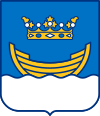


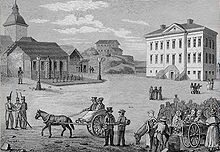




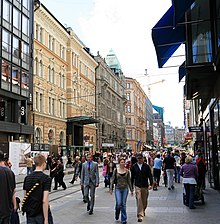

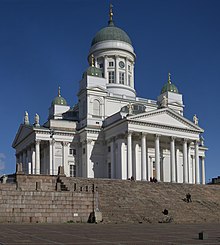





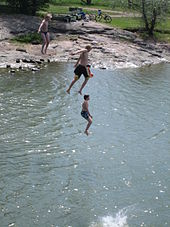
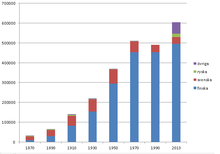
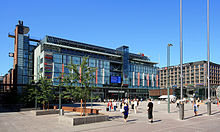


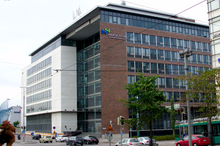







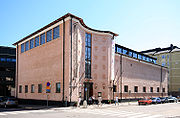


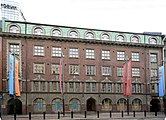



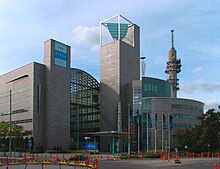
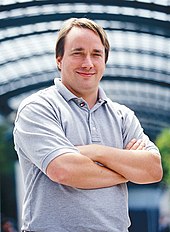




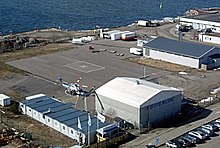

Ei kommentteja:
Lähetä kommentti